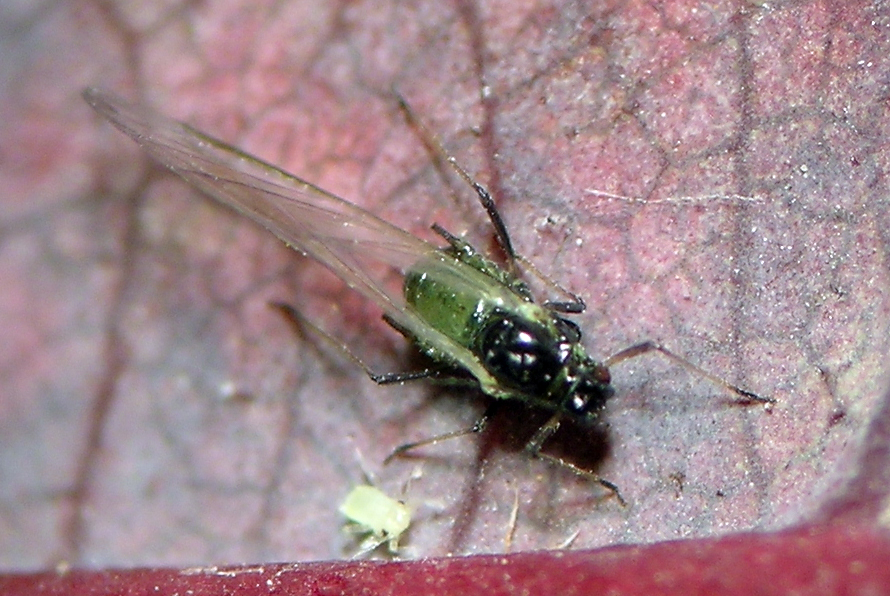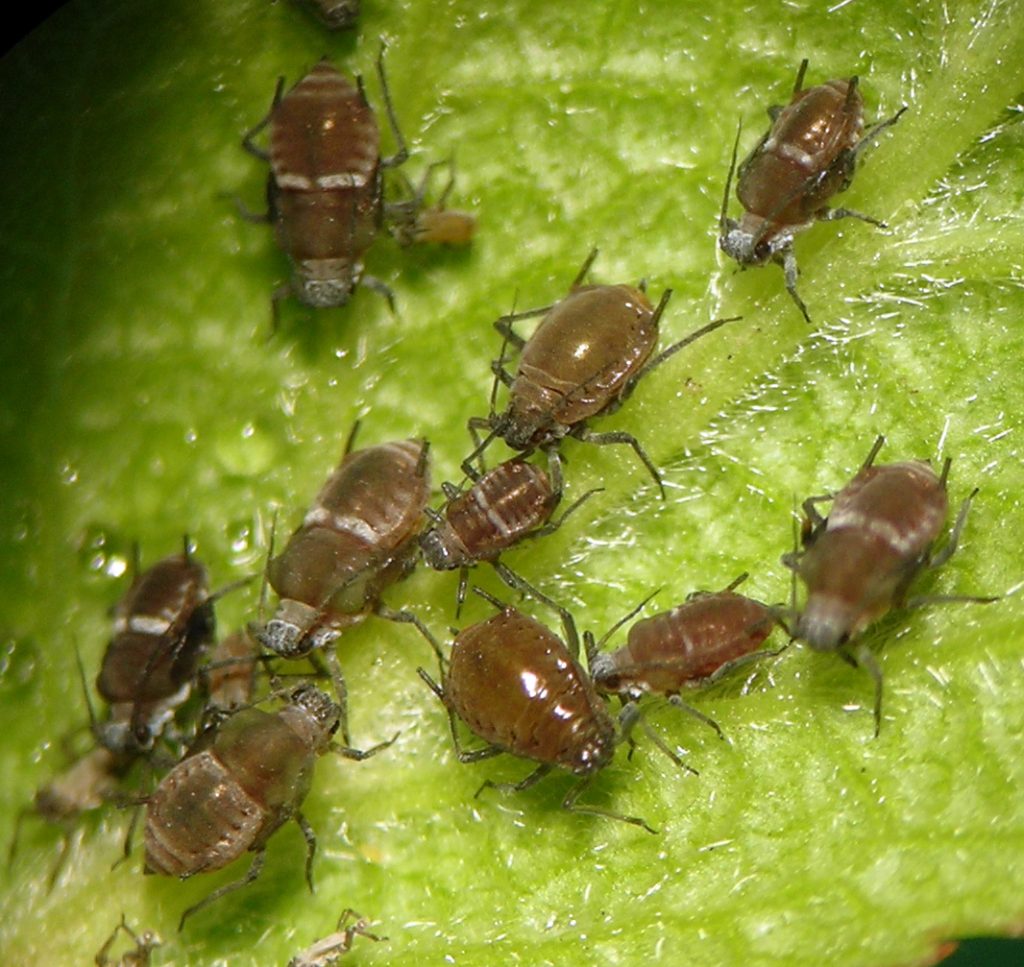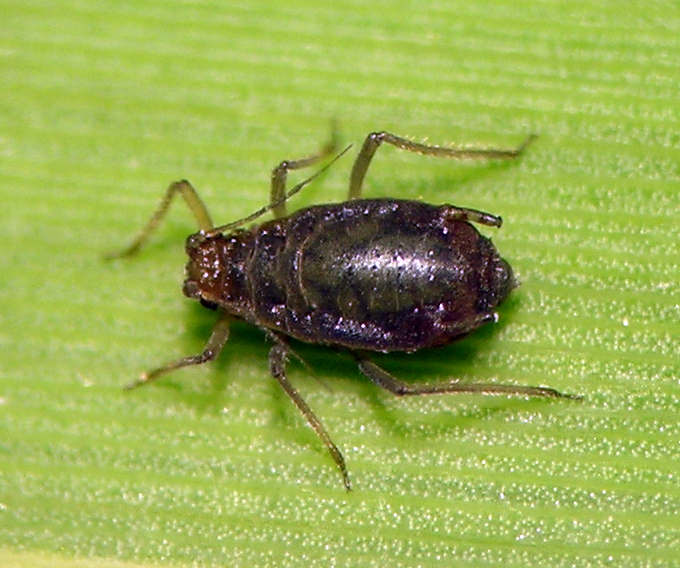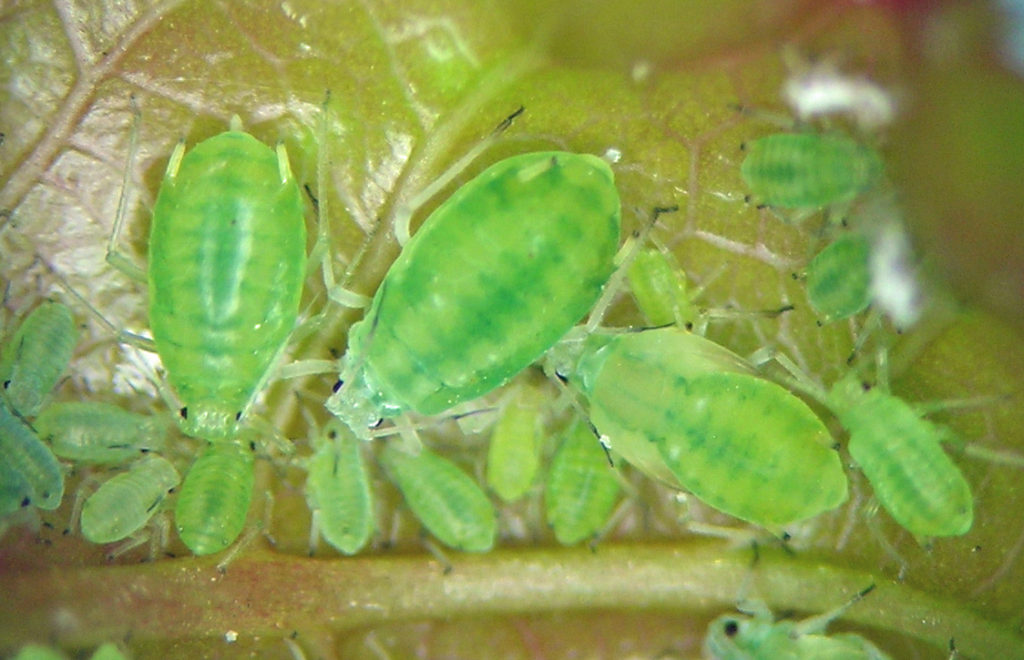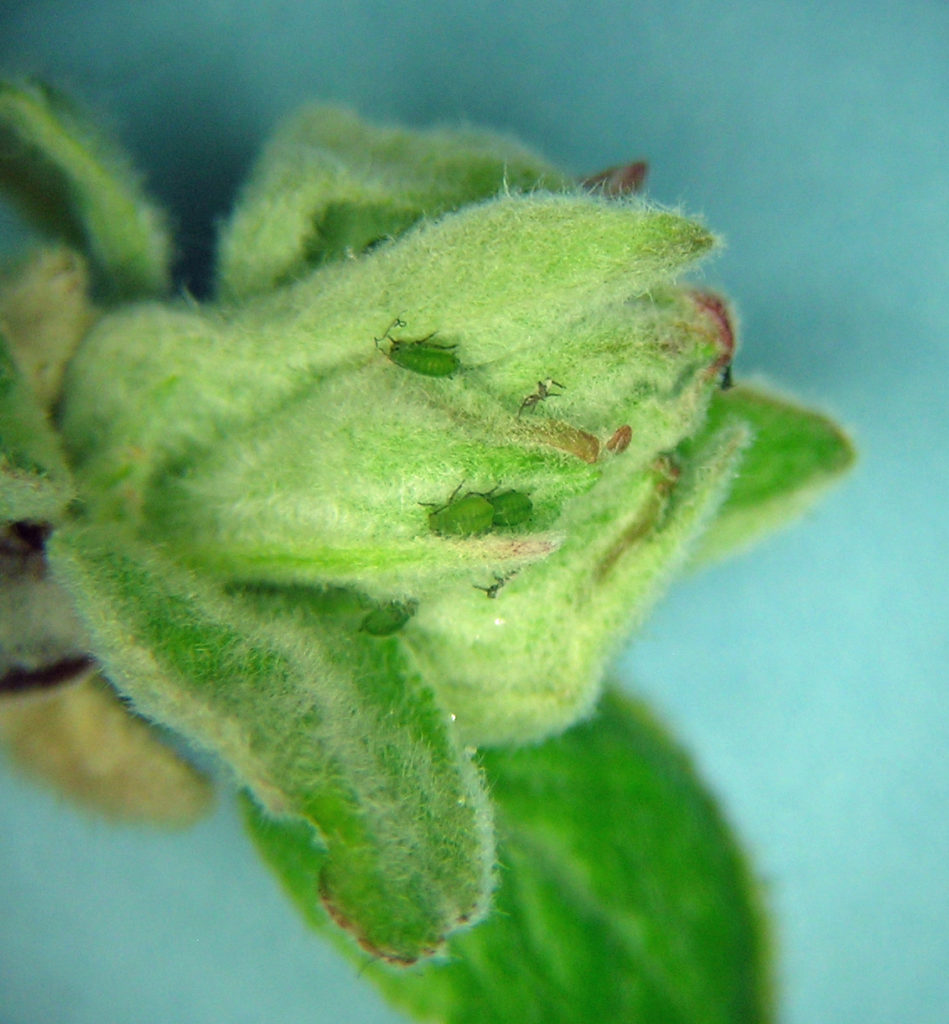Rhopalosiphum Koch
This page updated: December 2024.
Oh my goodness, I am glad that I don’t work on this genus seriously. I still have trouble recognizing the species, not sure why. Is it because the keys are troubling or inadequate? Is it because more species exist than are accounted for in the keys? Is it because of crazy variation of each species in terms of habitus, color, or morphology? Am I just a knucklehead? Maybe as time allows I will add more photos and discussion.

Rhopalosiphum species mostly feed on Prunus and relatives as primary hosts, and monocots as secondary hosts. Once slide mounted the genus is fairly easy to recognize among aphids in western North America, but as Blackman and Eastop note, the generic limits are not well-defined from a world-wide perspective.
Specimens like those below on chokecherry trouble me because they seem to be one species, in this case Rhopalosiphum padi (L.), but were found on the typical host plant of another species (in this case, R. cerasifoliae).
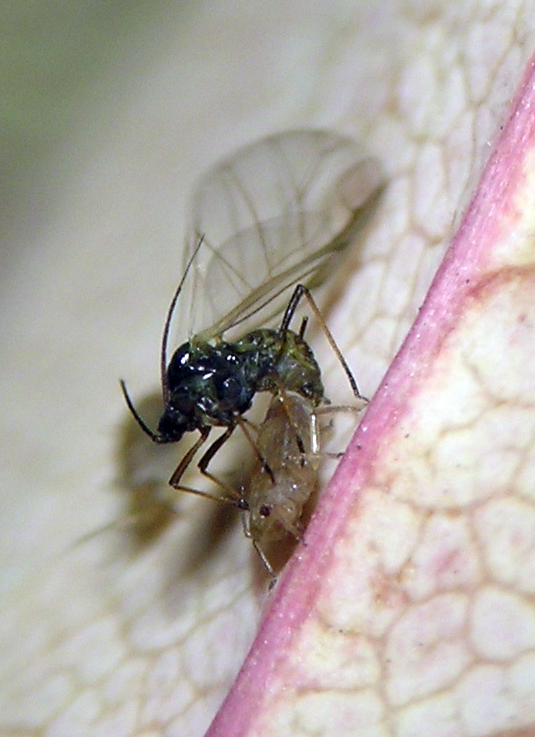
Species covered below (click on the name to jump to that species):
- Rhopalosiphum cerasifoliae (Fitch)
- Rhopalosiphum enigmae Hottes & Frison
- Rhopalosiphum musae (Schouteden)
- Rhopalosiphum oxyacanthae (Schrank)
- Rhopalosiphum padi (L.)
Rhopalosiphum cerasifoliae (Fitch)
This species uses chokecherries as primary host (e.g. Prunus virginiana), and apparently migrates to Cyperaceae. Despite collecting near and among chokecherries on almost every collecting trip I make, I rarely find this aphid. I have no confident records of it from secondary hosts, but I think that many of my Rhopalosiphum samples from mixed wetland herbs are this species. So, yet another frustrating Rhoposiphum species to understand. When on chokecherry, it causes a leaf roll, tends to occur in very large numbers, and is easy to recognize even in the field.
I have samples from Washington, Oregon, Idaho, Wyoming, Colorado, Nebraska, New Mexico, and North Dakota.
Rhopalosiphum enigmae Hottes & Frison
I often check Typha (cattail) for aphids everywhere I go, and after many years of this, I finally found this aphid in late May of 2004. This species is reported to be monoecious holocyclic, which requires that it overwinter as eggs on or associated with Typha. Most places Typha grows in western North America are completely inundated with water during the winter, possibly causing the extreme rarity of this aphid. The site where I found it was a small man-made retaining wall near a man-made reservoir. This retaining wall maintained a steady water level behind it, allowing the Typha to experience a constant water level. This aphid was therefore, it seemed to me, able to survive year after year in this site due to the predictability of the habitat. I visited the same site in early June of 2010 and easily found many more specimens. I now have specimens from that site in Washington plus a couple places in Colorado (including our back yard).
Rhopalosiphum musae (Schouteden)
While we lived in Lakeview in southern Oregon (2015-2021), I studied a Rhopalosiphum on Prunus subcordata. It is a truly striking and fabulous aphid, with bold wax bands, dark coloration, and the propensity to develop into stunningly large populations on this shrubby plant commonly known as Sierra plum. Work by colleagues led by Gary Miller at the USNM has supported the idea that this aphid is Rhopalosiphum musae, a species known mostly from anholocyclic populations around much of the world. Southern Oregon is clearly part of its native range. Spring populations persist on Prunus for 3 or more generations, building up populations of great density on stems and leaves. I have one sample of Rhopalosiphum from the semi-aquatic plant Alisma that may be this species. All my samples are from southern Oregon, just north of California.
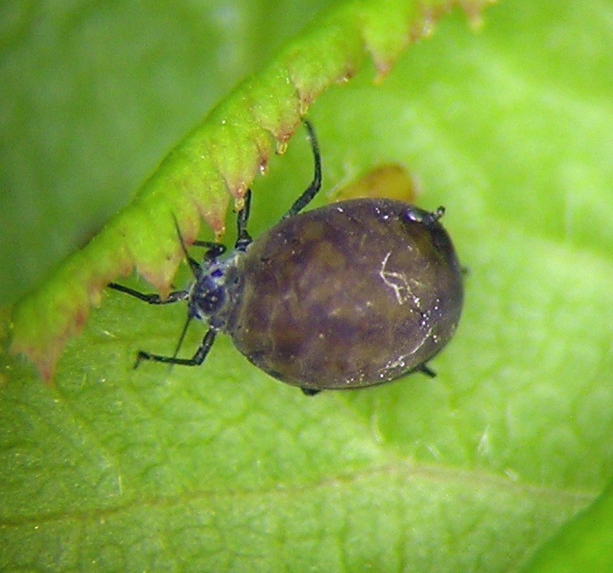


Rhopalosiphum oxyacanthae (Schrank)
This is a species that is probably of North American origin (see Blackman and Eastop) but that is now almost cosmopolitan. It is by far the most easily collected Rhopalosiphum in western North America, being easily found in spring and fall on almost every Crataegus, Malus, and Sorbus plant I’ve ever looked at. Interestingly, I have never seen it on secondary hosts, reported to be subterranean parts of grasses, tended by ants. The latter is possibly due to a more cryptic life style than some other root-feeding aphids, which are apparent from above due to soil disturbance caused by tending ants. (I still need to hone my skill at collecting root feeding aphids.)
My samples are from Washington, Oregon, Idaho, Utah, Colorado, Minnesota, Ohio, and Quebec.
Rhopalosiphum padi (L.)
This is the most common pest species of Rhopalosiphum in western North America, feeding on grains and many species of grass plus several species of Prunus as primary hosts. Like so many common species, I don’t often collect it and have few photos. Also, I worry that what we quickly and happily identify as R. padi in the west might actually be a mixture of species, perhaps including things like Rhopalosiphum padiformis Richards more often than we think.
I have material identified as this species from Alaska, British Columbia, Washington, Oregon, California, Idaho, Utah, Colorado, New Mexico, Quebec, and Germany.
